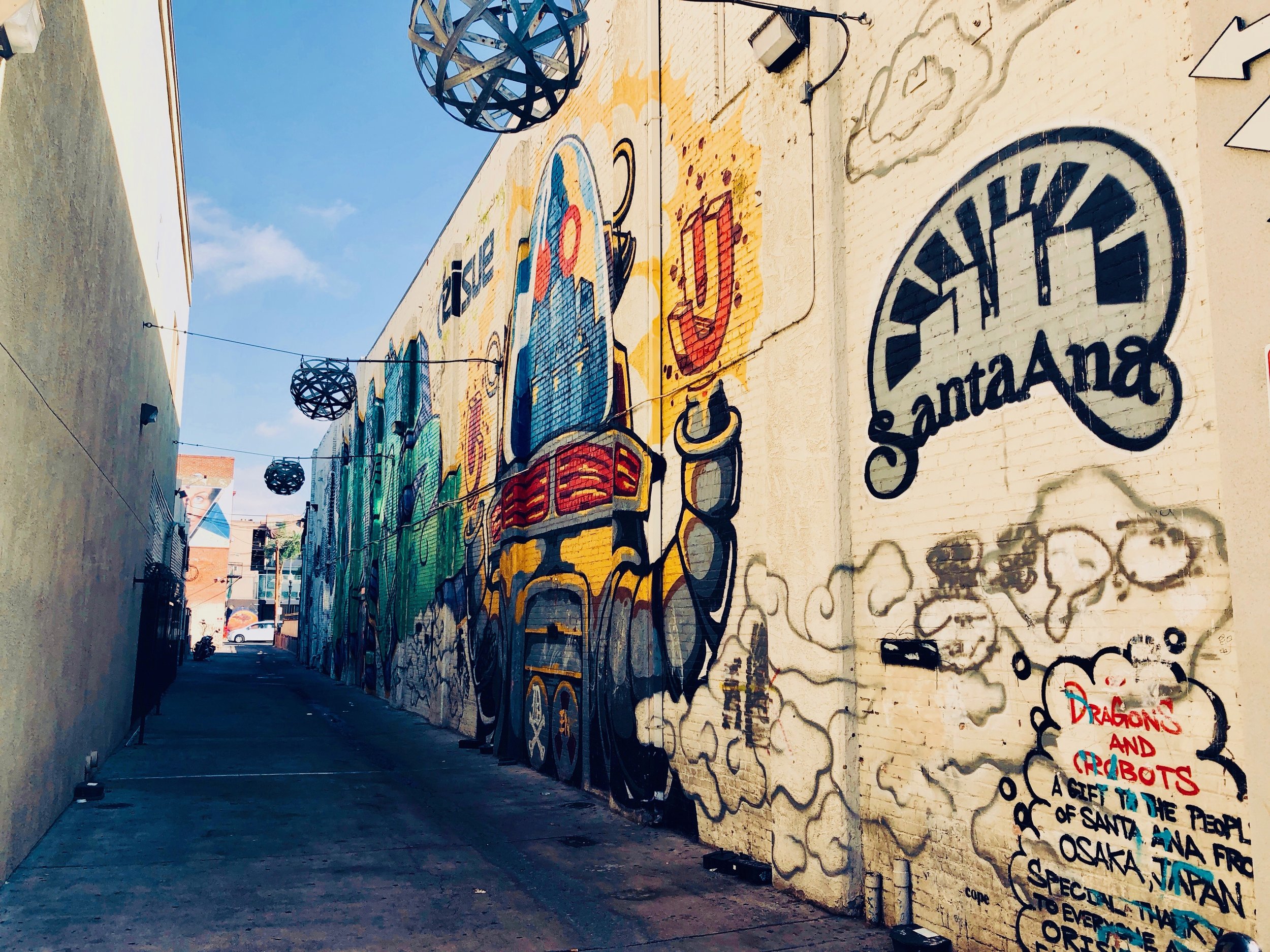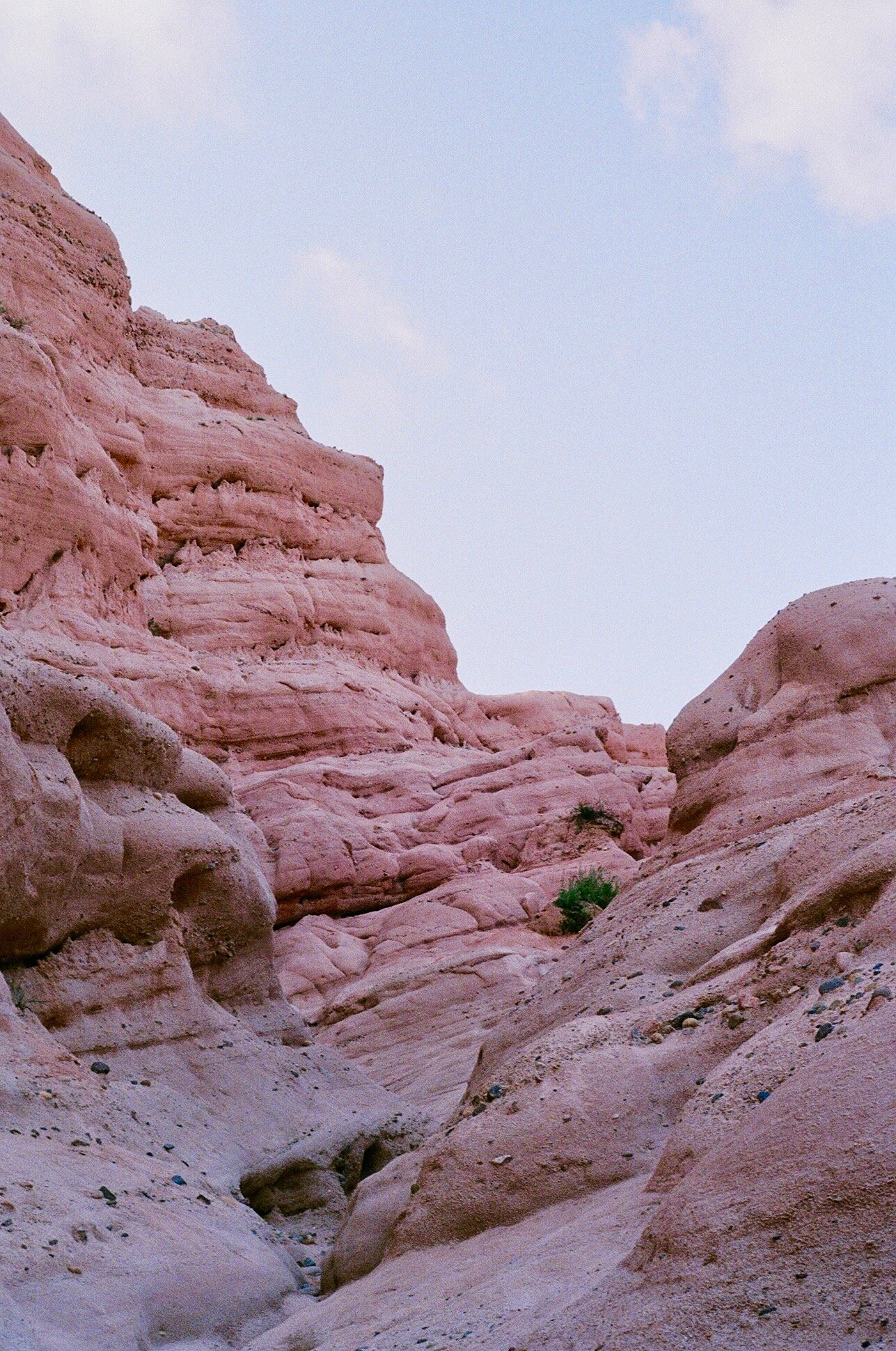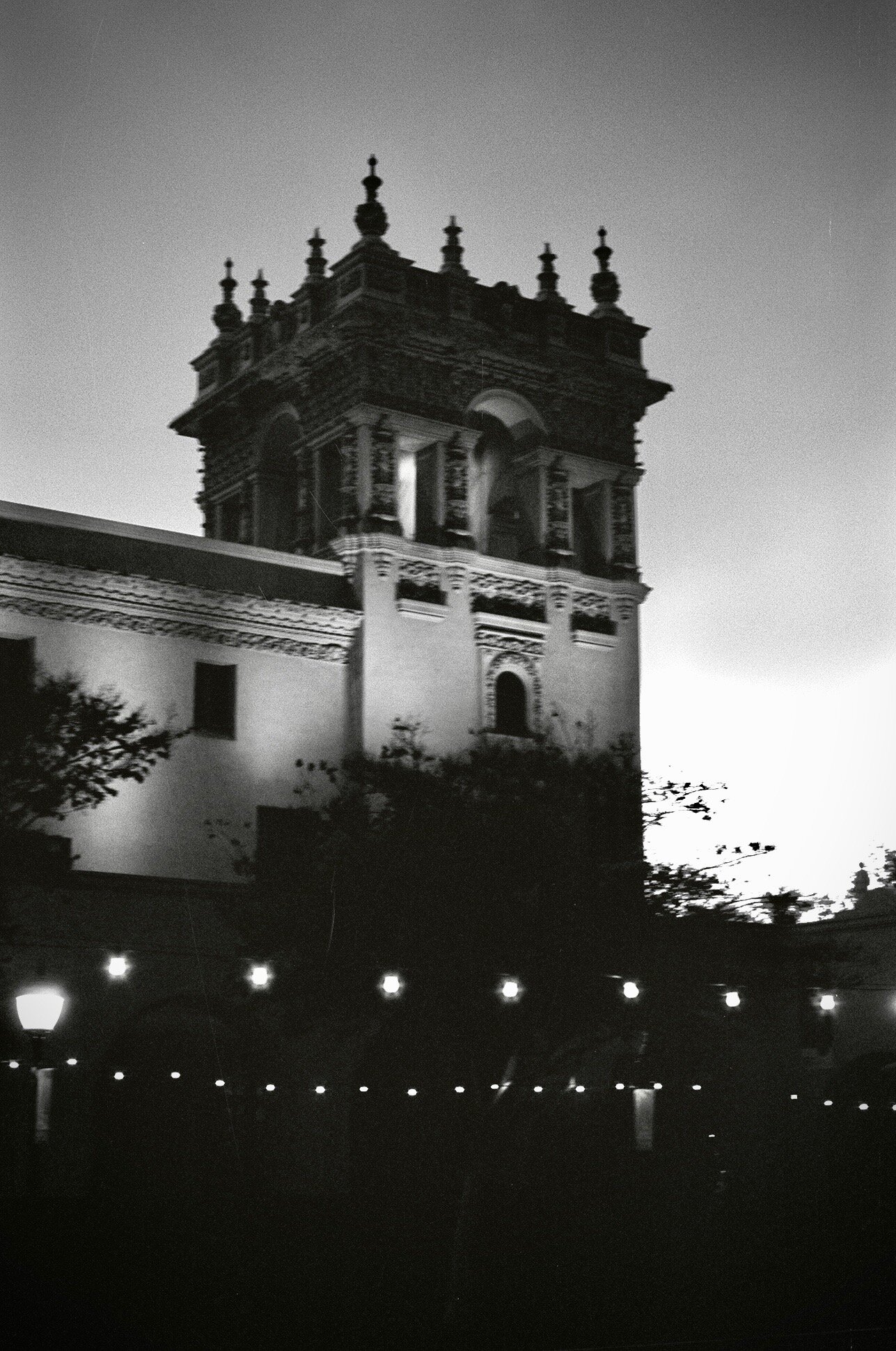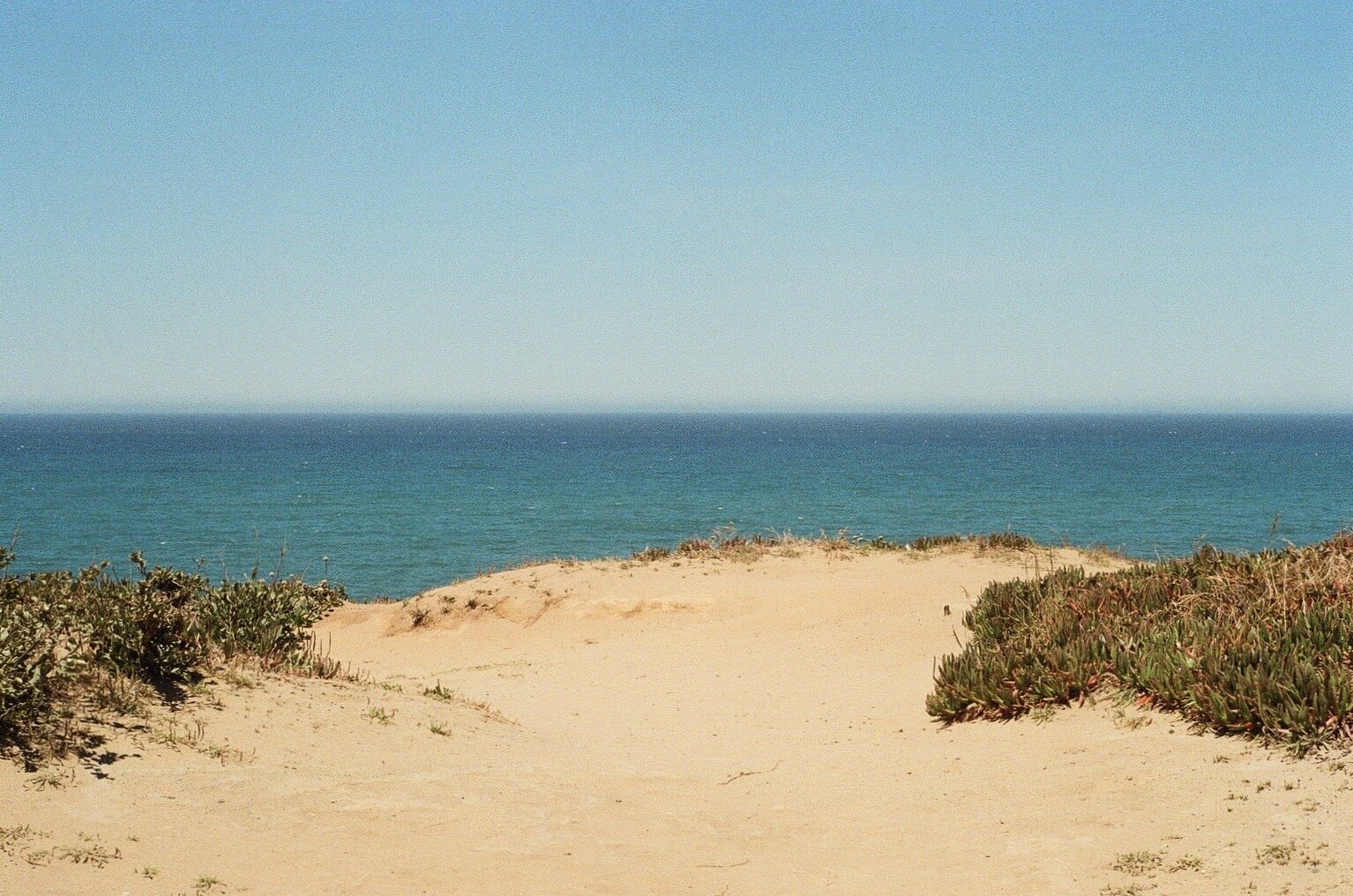SANTA ANA

I grew up in Laguna Beach, California. It’s in Orange County.
You’ve probably heard of them both. You likely have pretty strong sentiments as to what they’re like and what sort of people live there. You think you could pin down what Orange County means, what it looks like, what goes on within its bounds.
You’re wrong.
Laguna Beach has (only recently) become known for its affluence, viewed through the lens of MTV’s Laguna Beach: The Real Orange County as a bastion of the self-absorbed elite whose only preoccupations are how to best spend money and further restrict the civil liberties of the select few regular folks who can still afford to live there through police-state legislation that only those with too much time on their hands can pass. I can’t refute all of that. That part is mostly true. Its place in history is nevertheless misunderstood. An eclectic and genuine California beach town that played an integral part in the story of American art in the West. A centerpiece in the psychedelic counter-cultural movement of the 1960’s. A place where people, from its founding and onward to when I was a kid in the 90’s, dared to be themselves: hippies, gays, surfers, artists, musicians…the creatives among us.
Today that ethos has waned. It clings on like a thistle on a sweater, determined but fleeting, ultimately doomed. I’ve given up on pretending it’s the same, and that’s okay. So yes, I will give you all that. Here in New York City you’ll encounter the same story arc in places like Greenwich Village, the East Village, and more recently, Williamsburg and Bushwick. Such is time.
But that is Laguna Beach. Laguna is only a small portion of Orange County, and yet in recent years the glitzy reputation of the coastal towns has been blanketed with negligence over the interior cities in media portrayals of the county. This could not be farther from reality, and for those willing to make the trek beyond the beach, a multicultural Disneyland (oh, and the actual Disneyland as well) awaits. Where then to start?
Santa Ana.
Go to Santa Ana.
I’ll tell you why. But first, a mild diatribe.
When people write off Orange County as a homogenous, conservative county south of LA devoid of culture, they’re skipping over what should in my mind be seen of as an entire city that’s anything but vanilla. Orange County is in fact the densest county in California (besides the consolidated city-county of San Francisco), far denser than Los Angeles or San Diego counties. Over a third of the county is Hispanic and it also has the largest proportion of Asians for any county in the state at around a fifth of the total population. The patchwork of ethnic communities found particularly in the northern and more urban half of the region feel and operate like a metropolis, and in my mind should be thought of as such (and if we want to get technical here it is defined as part of the Los Angeles Metropolitan Area, and also was part of Los Angeles County until 1898...let it not be forgotten that LA begged for it to stay and took legal action to try to prevent its eventual secession). Dozens and dozens of languages are spoken, food of every sort can be found, and people from all over the world call it home. As a whole it has far more in common with Brooklyn than with Beverly Hills.
Are there moms with botox lips who have seven fake breasts and are going through multiple divorces at once? Yes. Are there people who think Iraq is in Australia and that shopping is a sport? Absolutely. But plan on driving through miles and miles and miles of multicultural cities and neighborhoods and every notch along the economic spectrum before you find them, because Orange County is one giant, untamable, cacophonic beast. I love it, and you will too.
Of the many places to go in the interior (an arbitrary and self-invented label for anywhere more than three miles inland or better yet, on the other side of any coastal hill), Santa Ana is your best bet for getting your feet wet.
Roots run profundo in this part of the country. The surrounding area was settled the same year that the Declaration of Independence was signed, with Spanish missionaries and explorers having passed through years before that and the area at large being claimed as part of the Spanish Empire in the 1500s. There are not Mexicans in Santa Ana simply because they immigrated here for a better life (though that’s of course a huge and ongoing part of the story). No no no. No. They are here because Santa Ana, and all of California at that, was part of Mexico way before the short white chicks with fake boobs and equally white Porsche Cayennes moved in from Vegas and stole the county’s narrative. Thankfully that cultural heritage is not gone in The OC. It thrives in Santa Ana, a pulsing city of Latino and Chicano energy. A city of over 300,000 people that’s the fourth densest in America for cities over 300,000 in population, after only New York, San Francisco, and Boston. It’s one of the most Hispanic cities in the US as well, with over 75% of the population identifying as Latino. The result is a Chicano paradise, where the tacos are fresh, the cars blast mariachi and seemingly only mariachi, lowriders with hydraulics still reign king and pomade flies off the goddamn shelves. A true, come-as-you-are Southern Californian city, hot and gritty, endless in opportunity for exploration and ready to be itself. No bullsh** here. Just straight-up Santa Ana (there are a couple hipster coffee shops with haircuts to match but they seem welcomed by the locals, for now).
It was thus the obvious choice then when I flew home to California last week and wanted to spend a free day adventuring with my Dad (a product of a Hispanic family himself, born and raised in and around Los Angeles, specifically South Gate, Lynwood, Paramount and West Covina).
To get there you can take the Orange County Metropolitan Authority bus system, Metrolink (Southern California’s regional rail system, connecting Los Angeles, Orange, Ventura, San Bernardino, Riverside and San Diego Counties), Amtrak or carpool to downtown. Santa Ana is vast and as a whole is best navigated by car, so if you want to walk around you’ll want to head to downtown as we did.
There you’ll find a range of historic buildings, including Art Deco, Spanish Colonial, and the boss of all bosses in the realm of architectural styles (I say this with zero architectural acumen beyond what I learned on a 35 dollar boat tour on the Chicago River but I nevertheless consider myself an expert in the field): Streamline Moderne; all filled with Latino businesses to create that bizarro yet elegant fusion of culture that I’ll forever refer to, simply and proudly, as “American”. It’s that sort of place where it makes total sense to have a vaquero clothing store in an old swing dance hall or turn-of-the-century savings bank.
Virgen de Guadalupe. Santa Ana, California.
My dad and I parked on 4th St, arguably the main artery, then wandered outward in a thoughtless spiral. It was Black Friday and somehow the streets were almost empty. Still, the street vendors were out, the music still blared and the sun still made its way into the late November day. Walking was really the “activity” of the day, with no goal in mind or crazy Bourdain-level food mission on the agenda. I just wanted to spend time with my dad taking what I affectionately refer to as the real Orange County, and by extension California. If you can do without extravagant shopping, incessant sight-sighting and a neverending focus on getting to the “next thing”, you’ll catch the same accessible and as-it-is glow that we did.
Don’t come to Santa Ana to have you mind blown or the entirety of your being transported into another dimension of existence. Don’t come in search of the exotic or to take exploitative selfies to show your friends that you stood in front of a colorful mural for four seconds.
No.
Come to have your heart relieved that Southern California hasn’t entirely gone to sh** just yet.
I’m someone who’s obsessed with walking (it’s an Olympic Sport after all), caring less for the destination and more the enjoyment of taking in a neighborhood’s aesthetic and strange identifiers. In that sense Santa Ana’s downtown is a paradise, as the city has supported breathtaking murals and street art projects that highlight its Chicano culture with intense pride. Wandering up and down allies will inevitably land you in front of more art, solicited and unsolicited, legal and not at all, nearly all impressive. Please do hit the alleys up for this, you’ll thank me later.
Along the way we stumbled into an epic mobile bookstore, Libro Mobile. It “resides on Calle Cuatro (off 4th & Spurgeon, back alley area) and travels throughout Santa Ana visiting a variety of communities, including Grand Central Art Center, Alta Baja Market and Café Calacas” and its “design...is nostalgic of the iconic paletero carts or fruit vendors that are part of downtown Santa Ana.” I f***ing fell head over heels for this place my friends. This spot is all-time and we lost ourselves in the many Spanish books and old journals from around the Orange County area. They also have a corner dedicated to local zines that’s teeming with good sh** and made me want to never leave. I read through a good eight or nine zines, mostly focused on Chicano culture, and in the end bought three:
Hymns & Verses II: from the streets y la comunidad by Francisco Aviles Pino, an undocumented writer born in Acapulco and current research fellow at UCLA’s César E. Chávez Department of Chicana/o Studies and a fellow of the Poetry Foundation’s Emerging Writers
The Other Side The December 1999 issue of Pitzer College’s student/faculty publication and a total blast from the 90’s past.
Sea Shells Found in Orange County A 1989 reprint of a 1940 publication by Adele Lewis Grant, PhD, detailing, well, exactly as the title says. An enthralling guide that opened my imagination to the glorious wonders of Three-Winged Murexes , Fingered Limpets , the universally loved Sea Cockle and more.
Zines at Libro Mobile. Santa Ana, California.
Shelves at pop-up Latino bookstore Libro Mobile. Santa Ana, California.
At Libro Mobile. Santa Ana, California.
The final selection of zines for purchase at Libro Mobile. Santa Ana, California.
With Libro Mobile being an unexpected prize and my mom wanting us home approximately three days before dinner is ready to make sure it’s not cold upon arrival, we readied to go home and spent another half hour or so wandering before getting in the car. We checked out the Court House a bit, stared at the historic Minter House, and stared at some other cool sh** too. Again, come to eat good food, to walk around in perfect weather, smell real handmade tortillas, and take in a place that remains connected to the roots of California’s past. Oh and the lowriders, too. They’re a real thing.
Buena suerte,
Fletch










